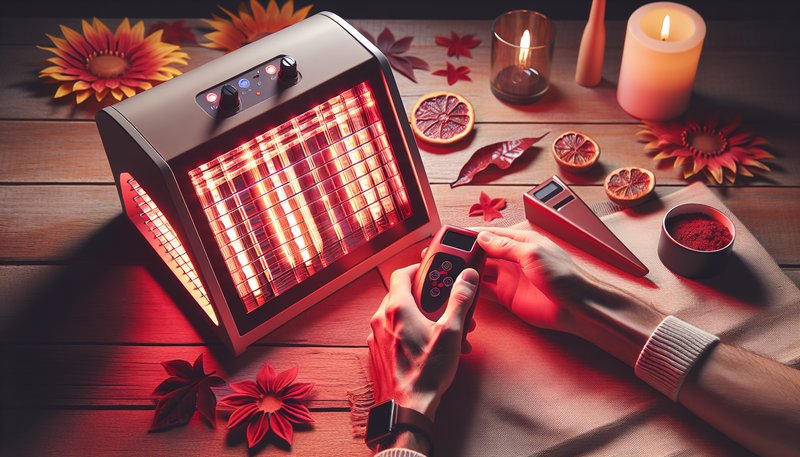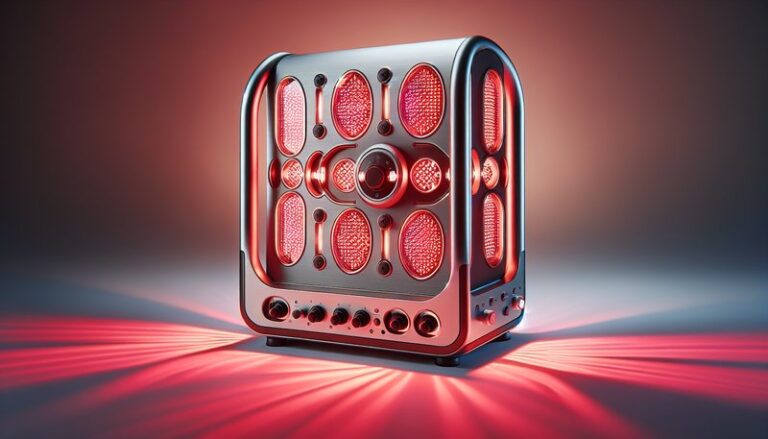Does Red Light Therapy Help With Redness?
Does Red Light Therapy Help With Redness?
Is redness in your skin affecting your confidence or daily life? Are you curious about whether red light therapy could be the solution?
This article delves into the impact of red light therapy on skin redness, exploring how it works, the benefits it offers, and considerations to keep in mind. We will also examine alternatives and address common questions surrounding this therapy.
Key Takeaways
- Red light therapy may help reduce skin redness by promoting healing and reducing inflammation.
- Multiple benefits of red light therapy include enhanced skin tone, increased collagen production, and improved skin texture.
- Consultation with a healthcare or skincare professional is recommended before starting red light therapy, especially for individuals with sensitive skin.
What is Red Light Therapy?
Red light therapy, also known as low-level laser therapy (LLLT) or photobiomodulation, involves the use of specific wavelengths of light, primarily red and near-infrared, to stimulate cellular activity. This therapy has gained popularity for its potential to improve skin health, healing processes, and a variety of other applications.
This therapy is based on the principle that certain wavelengths of light can penetrate the skin and enhance mitochondrial function. The mitochondria, known as the powerhouse of the cell, generate energy (ATP) that is crucial for cellular repair and regeneration.
Red light therapy is typically administered using various devices, including handheld units, panels, or light beds, making it versatile and accessible for home use or in professional settings.
What are the Benefits of Red Light Therapy?
Red light therapy offers several remarkable benefits, especially when it comes to reducing redness and improving skin appearance.
Reduction of Inflammation
Red light therapy can significantly reduce inflammation in the skin, which is often a primary cause of redness. By increasing circulation and promoting lymphatic drainage, it helps to soothe irritated skin and diminish redness over time.
Enhanced Skin Healing
This therapy can accelerate the healing process of the skin. Whether caused by acne, rosacea, or other skin conditions, red light therapy stimulates cell turnover and encourages faster healing, leading to potentially less redness and more even skin tone.
Increased Collagen Production
Collagen is essential for maintaining skin elasticity and integrity. Red light therapy has been shown to stimulate collagen synthesis, leading to firmer skin and reduced appearance of redness associated with aging and damage.
Overall Skin Revitalization
Implementing red light therapy into your skincare routine can lead to overall skin rejuvenation. Users often report improvements in not just redness but also skin texture, tone, and brightness.
Is it Possible to Use Red Light Therapy to Treat Redness?
Yes, it is possible to use red light therapy as a treatment for redness. Many people find it effective as a complementary approach to other treatments or skincare routines.
What are the Advantages of Using Red Light Therapy for Redness?
-
Non-Invasive and Painless: Red light therapy is a safe, non-invasive treatment option, making it suitable for sensitive skin without the risk of harsh chemicals or procedures.
-
Minimal Side Effects: Generally, red light therapy has few side effects, with most users experiencing only a mild warmth during treatment.
Learn the details in Benefits of Red Light Therapy for Hair
-
Convenience: With various devices available, individuals can use red light therapy at home, fitting it seamlessly into their daily routines.
What are the Disadvantages of Using Red Light Therapy for Redness?
-
Consistency Required: Achieving noticeable results often requires consistent and prolonged use, which may be challenging for some.
-
Cost: High-quality red light therapy devices can be expensive upfront, and repeated sessions in professional settings may add up over time.
-
Individual Variation: Results can vary between individuals, and some may not experience significant improvements, necessitating alternative treatments.
What are the Things to Consider Before Using Red Light Therapy?
Before starting red light therapy, several important factors should be considered to ensure safety and optimal results.
Skin Type and Sensitivity
Individuals with sensitive skin or specific skin conditions should consult a skincare professional. Knowing your skin type can help tailor treatment plans effectively.
Existing Medical Conditions
Conditions such as photosensitivity or certain skin cancers may warrant caution when considering red light therapy. Consulting a healthcare provider is crucial for safe use.
Expectations and Treatment Plans
Setting realistic expectations based on individual skin conditions, the severity of redness, and anticipated frequency of treatments can enhance satisfaction with the therapy.
What are the Alternatives to Red Light Therapy?
If red light therapy isn’t the right fit for you, several alternatives can help reduce redness in the skin.
Topical Treatments
Many dermatologists recommend topical treatments that contain ingredients like azelaic acid or niacinamide, known for their anti-inflammatory properties and effectiveness in reducing redness.
Chemical Peels
Chemical peels can improve skin tone and texture, helping to lessen redness associated with conditions like rosacea or post-acne scars. They promote shedding of the outer layer of skin to reveal healthier cells beneath.
Laser Treatments
Lasers such as pulsed dye lasers or cool touch laser therapies can target redness more aggressively than red light therapy. This can be particularly effective for birthmarks or rosacea.
See the full review Is Red Light Therapy Safe for Dark Skin?
Conclusion: Is it Recommended to Use Red Light Therapy for Redness?
In summary, red light therapy can be an effective tool for managing redness, with numerous benefits like reducing inflammation and promoting healing. However, individual results can vary, and it’s essential to consider personal skin type and sensitivities. If you’re contemplating treatment, a consultation with a healthcare or skincare professional can provide tailored guidance.
Frequently Asked Questions
Is red light therapy safe for all skin types?
Generally, red light therapy is considered safe for most skin types. However, individuals with specific skin sensitivities or conditions should consult their dermatologist before starting treatment.
How long does it take to see results from red light therapy?
Results can vary, but many users report noticing improvements within a few weeks of consistent use. Individual skin conditions and treatment frequency can influence this timeline.
Can I use red light therapy along with other skincare treatments?
Yes, red light therapy can be used in conjunction with other skincare treatments. However, it’s advisable to space out the treatments to avoid over-stimulation.
Are there any side effects associated with red light therapy?
Typically, side effects are minimal, but some users may experience temporary redness or warmth in the treated area. It’s essential to follow the proper treatment protocols to minimize any adverse effects.






